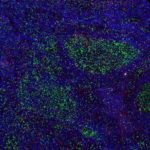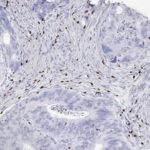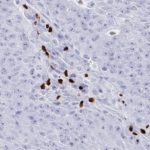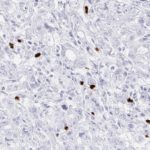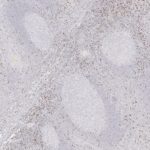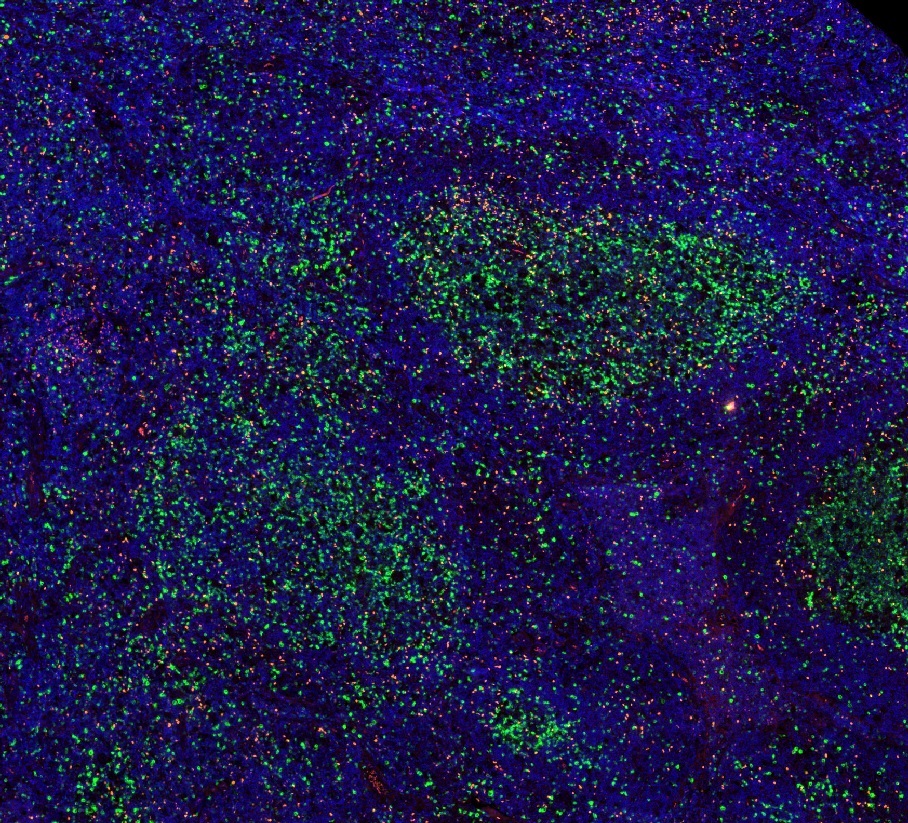Clone FX3 has been developed and validated for fluorescence multiplex IHC studies of FOXP3 expression in human tissues.
FOXP3 (Forkhead box protein P3) is mainly expressed in Regulatory T (Treg) cells, a subset of CD4+ T-cells, that play a suppressive role in the immune system. Treg cells ensure immune homeostasis through their ability to suppress the activation and function of leukocytes. FOXP3 has emerged as a prominent target for the development of new immunotherapies for cancer and autoimmune diseases.
The transcription factor FOXP3 is important for the development and inhibitory function of regulatory T-cells (Treg) and acts either as a transcriptional repressor or as a transcriptional activator depending on its interactions with other transcription factors, histone acetylases and deacetylases. FOXP3 coordinates the suppressive activity of Treg cells by activation of different genes, including CTLA4 and TNFRSF18, paralleled by repression of genes encoding cytokines such as interleukin-2 (IL2) and interferon-gamma (IFNG) .

